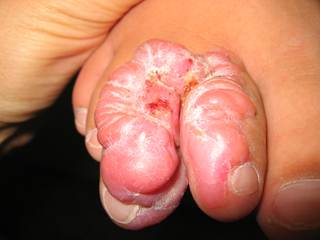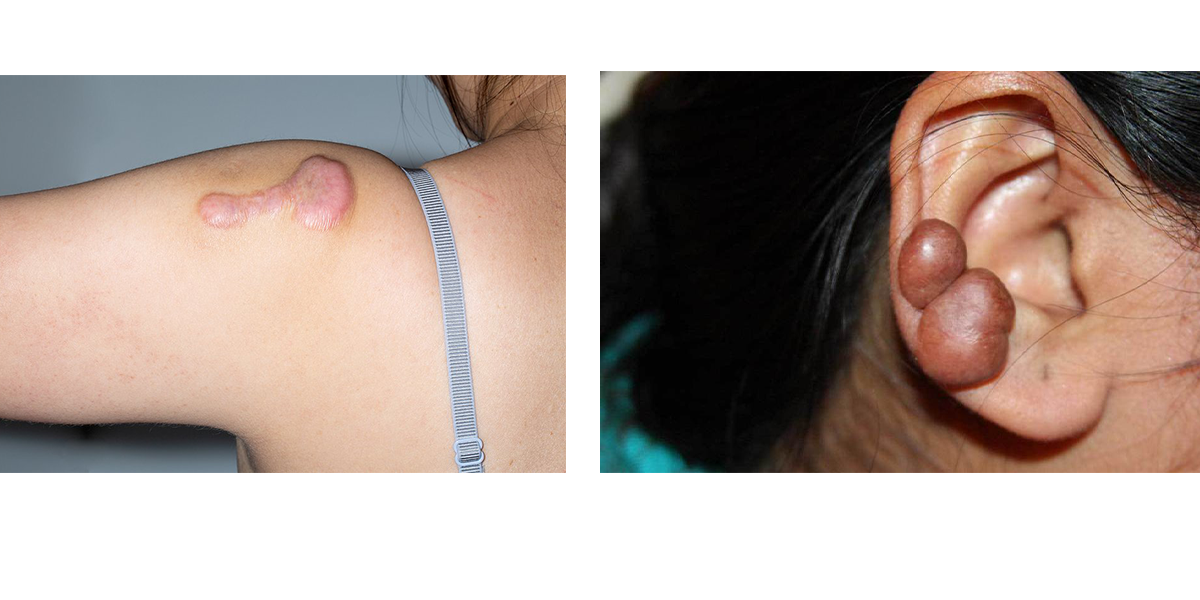
While keloid scars may not be too dangerous depending on their size, they’re still tough to deal with and can be irritating at best.
Here’s some information all about keloid scars.
Many patients inherit their tendency to form keloids. While normal scarification involves collagen fibers laying in parallel to one another, keloidal scarring is observed when collagen fibers lay at right angles to each other (instead of neatly stacking).
Think of a straw hay stacked on top of itself in parallel rows versus at right angles.
This right angle orientation leads to thickened and sometimes painful scars, most commonly found on the chest, ears, and nape of the neck.
Essentially, a keloid scar is a raised scar witha flat surface that typically takes on the color of your skin, darkening over time. The border is often darker than the center, though the actual shape and appearance of keloid scars can vary.
Here’s an example of what some keloid scars look like:
 Are Keloid Scars Dangerous?
Are Keloid Scars Dangerous?In a word, keloid scars aren’t typically dangerous, unless they continue to grow to great sizes.
If this is the case, it’s very important to see a dermatologist about your options. Most often, the keloid scar is benign, but to be on the safe side, any excessive skin growths should be thoroughly checked by a trained dermatologist to rule out anything more dangerous.
This most often depends on the size and location of your keloid scar.
If your scar is rubbing against clothing or growing excessively, this could result in some irritation, itchiness, and pain.
However, most keloid scars are painless—physically, at least.
There are 2 primary methods we treat keloids: 1) Inject raised areas with cortisone to shrink their volume and 2) Employ our pulse dye laser to beat back the capillaries within that allow them to grow.
Between these 2 methods, we’re able to shrink and substantially lighten keloids. We’ll also give patients medicated bandages to use at home in order to further the gains achieved while in the office.
For extreme, disfiguring keloids, we’ll team up with our plastic surgery colleagues to excise and re-sew affected skin.